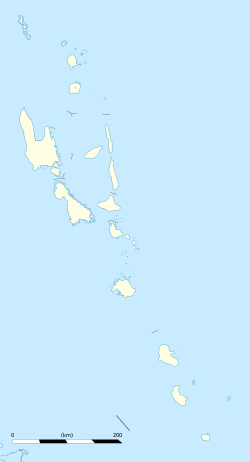Longana | |
|---|---|
Village | |
| Coordinates: 15°18′20″S167°58′2″E / 15.30556°S 167.96722°E | |
| Country | |
| Province | Penama Province |
| Island | Ambae |
| Area | |
• Total | 50 km2 (20 sq mi) |
| Time zone | UTC+11 (VUT) |
Longana is a village located on the eastern part of Ambae island in Penama Province, Vanuatu. [1] [2]
Contents
It covers land area of approximately 50 square kilometres (19 sq mi).
